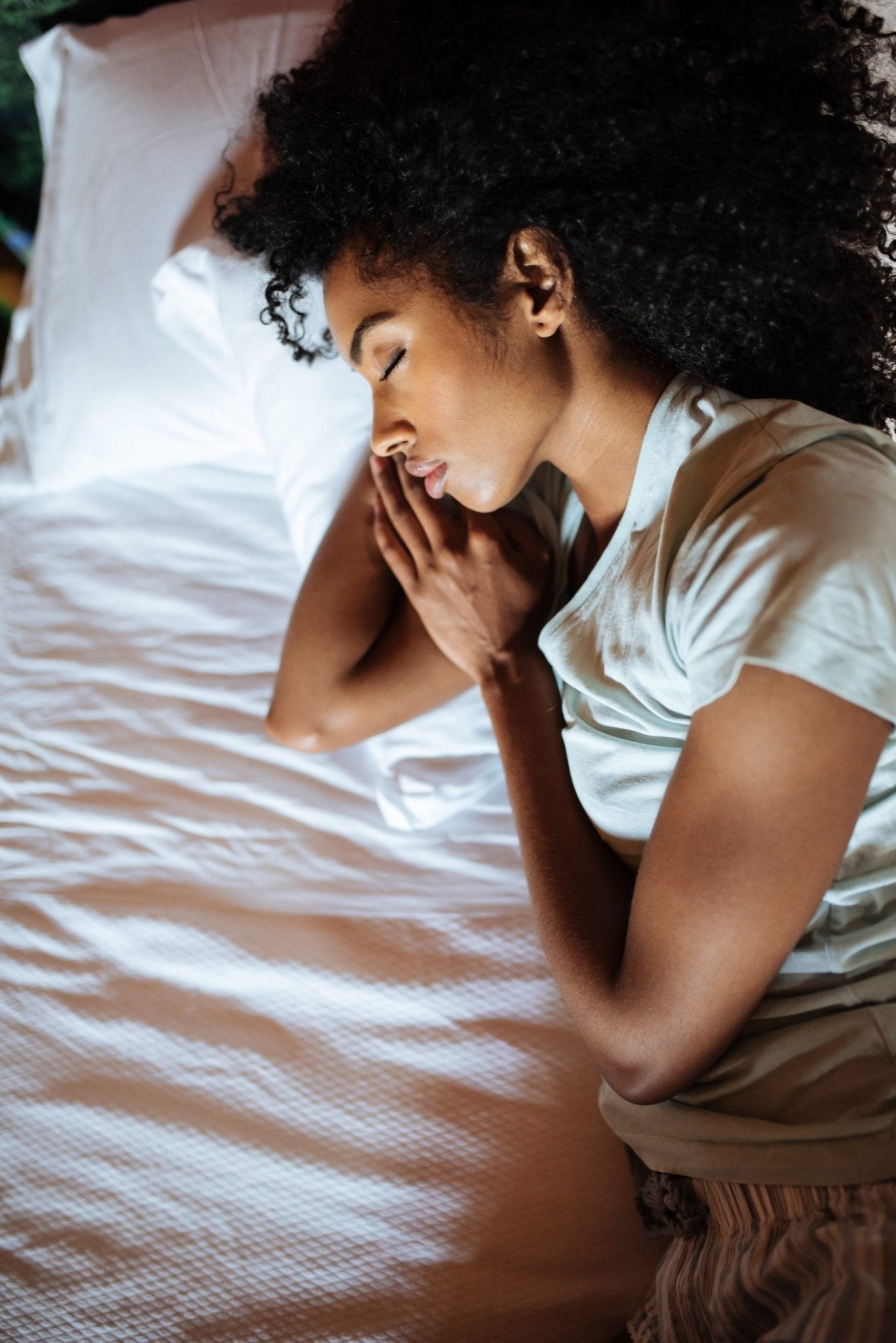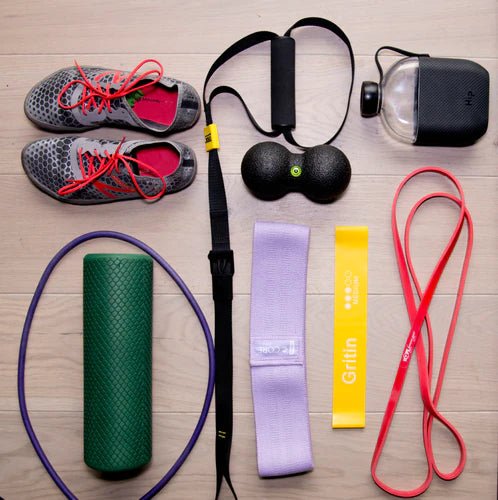If you ask anyone who does yoga if it benefits them emotionally and mentally as well as physically, I guarantee the answer will be a resounding ‘YES.’ As someone who has practised Vinyasa yoga for about 15 years, I find, personally, that it has the ability to help better my mood, stop the never-ending To-Do list in my head, it helps me focus, and (for want of sounding like a proper hippy), it makes me feel connected with myself.
Yoga expert, Sara Quiriconi, aka @livefreewarrior, knows all too well the positive effects yoga can have on our mental health. “About 17 years ago I was going through cancer treatment and one of my nurses suggested I try yoga to help with the anxiety I was dealing with,” she says. “I laughed her off and said, ‘Thanks, but no thanks. I’ll stick to my gym workouts and weights – it burns more calories.’ Naive, and stubborn, I had no idea that the real benefit of yoga had nothing to do, really, with the physicality of the movement, but in the mental gains.
Years later, I did start practicing yoga on a daily basis after being laid-off from my job in advertising and needing an exercise that was more affordable and accessible. I honestly started practicing yoga for the physical exercise, but stuck with it for the mental relief and reduction I noticed in my anxiety.”

SO How does yoga help our emotional state?
The effects of yoga on our emotional wellbeing aren’t just anecdotal – there are more and more scientific studies showing the positive ways that yoga can help with our mental health. According to the Harvard Health Publishing papers produced by the Harvard Medical School, research shows that yoga can modulate the stress response. “Available reviews of a wide range of yoga practises suggest they can reduce the impact of an exaggerated stress response,” they report. “By reducing perceived stress and anxiety, yoga appears to modulate stress response systems. This, in turn, decreases physiological arousal — for example, reducing the heart rate, lowering blood pressure, and easing respiration. The scientific study of yoga demonstrates that mental and physical health are not just closely allied, but are essentially equivalent.”
Another 2018 study from Brown University shown in the scientific journal PLOS One states that “When compared to Psychoeducation (e.g. cognitive behavioural studies), hatha yoga showed more reductions in depression.” It also states that there was a “More decrease in symptoms of depression compared to a control group at 6-months follow-up.”

SO Why Yoga now?
“In times of great stress,” says Sara Quiriconi, yoga can help with the mental stressors such as depression, fearfulness, feeling stuck, being lonely, as well as anger. From my own experience of feeling those stressors in other situations in my own life, I can relate that those emotions are based on elements outside of our own control — yet we react to them. Yoga (the syncing breathing with sequential movement), is part of my daily routine that keeps me balanced and able to deal with any stress that life throws my way.”
Her advice about emotions is this: “It’s important to note that all emotions are valid and it’s important to give yourself the space to feel them. Try not to judge whatever it is you’re experiencing, or feel bad about it. Just allow the emotion to surface, and have your toolset of yoga postures, breathing and self awareness to help defuse them.”
There is an increasing awareness today about energy in our bodies, and many yoga teachers believe that if you move that energy with different postures then we can potentially change our mood.
Here's Sara’s guide to the yoga Asanas that have helped her and her students in troubled times or in dealing with uncertainty. She suggests that if you are struggling with a particular emotion then choose the relevant postures from the below list and do all three. Alternatively, she says, repeat one of the postures three times, holding for a longer duration, say 60 seconds to 3 minutes each. Ensure you research each posture to make sure you're positioned correctly. You can see many on Sara’s Live Free Warrior YouTube channel.
If you're feeling DEPRESSED
“There’s a meditative element to yoga that promotes mindfulness, and helps to decrease depression and anxiety. Yoga and deep breathing have a mind-body connective element, stimulating a calm, soothing effect on the mind and body.”
Recommended postures:
• Forward Fold (Uttanassana)
“Going inward, this pose relieves stress on the back, neck and shoulders.”
• Bridge Pose (Sethu Bandha Sarvangasana)
“This pose strengthens the back muscles, relieving a tired back. It also helps you to relax, and be more at ease.”
• Cobra Pose (Bhujangasana)
“A chest opening asana which expands the lungs, allowing the heart space to open. It has an overall rejuvenating affect on the body.”
If you're feeling FEARFUL
“Fear is based in the future,” says Sara. “It’s about the unknown and the anxiety around what’s to come. We can plan, but what will actually occur is completely out of our control. Anxiety stems from fear, and the lack of control over the unknown. Yoga helps us to be more present, grounding us in the now, and taking our focus out of the not-yet-occured future.”
Recommended postures:
• Tree Pose (Vrksasana)
“An Asana that requires great focus, grounding and core strength to maintain, this posture keeps you rooted in the present moment.”
• Dancer Pose (Natarajasana)
“Another standing balance pose, ‘Dancer’ opens up the chest and heart, helping you to feel brave when faced with the unknown of what lies ahead. At the same time it helps keep you grounded and balanced.”
• Crow Pose (Bakasana)
“While there are many variations of crow, any arm balance will require upper body strength, which is a process of building trust in yourself, and focus in the present in order to maintain the posture.”
If you're feeling STUCK
“Getting unstuck can start physically,” explains Sara, “It then later may evolve to manifest itself metaphysically and mentally. When we are moving energy in the body with postures and breath, we may start off feeling a bit stiff — think, the ‘Tin Man.’ However, with time, effort and persistence, we begin to become more fluid in our movements, oiling the system.”
“So, when you feel stuck on an idea, not sure where to go in a project, or you’re dealing with a cancelled flight, or feel creatively blocked in a decision, stop, drop the mat, and get to a down dog and see where it takes you.”
Recommended postures (Sequence these poses together, flowing with the breath between the two):
• Upward Salute to Forward Fold (Urdhva Hastasana to Uttanasana)
“This helps you to stay grounded in the present while flowing with breath to rise and bow.”
• Reverse Warrior to Extended Side Angles (Viparita Virabhadrasana to Utthita Parsvakonasana)
“Engaging in core strength and flowing with breath between these two postures can help to unstick your side and upper body.”
• Downward Facing Dog to Plank (Adho Mukha Svanasana to Phalakasana)
“Moving from downward dog to plank on the inhale, and vice versa, this combination creates a strengthening and calming flow when sequenced together.”
If you're feeling LONELY
“Humans are social creatures,” explains Sara, “We are designed to interact with others. Current times, or even busyness, can leave us feeling disconnected, and often, at times, alone. Even in today’s digital era, social media and emails are no substitute for real, human connection.
However, true connection isn’t an outside job — true connection starts from within. By connecting our own self, our mind, and our breath to our body, we’ll realize that we’re never truly alone. We are at one with ourselves.”
Recommended postures:
• Camel Pose (Ustrasana)
“Low enough to the ground, this backbend prevents you from closing off. Instead, it opens you up to the world above and outside of you.”
• Locust Pose (Salabhasana)
“Mirroring a superman (ahem, woman) pose, imagine this posture to increase your confidence while strengthening your upper back as a strong, flying leader of the pack.”
• Reclining Bound Angle Pose (Supta Baddhakonasana)
“Placing your right hand on your belly, your left hand on your heart, inhale and exhale deeply, feeling the breath move through your body in your hands.”
If you're feeling ANGRY
“Anger can be caused by a multitude of outside experiences,” says Sara, “What can be agreed on, unexpressed or stored anger can be dangerous to those around you (resentment) and to yourself (potentially manifesting into disease).
The combination of movement and breathing are the key to releasing anger. When you exhale, let it become a release of the negative emotion through breath. Allow the exhale to be as loud, aggressive or “angered” as you need it to be — it’s just breath, after all. Use this process to move the anger out of you, so that it doesn’t get stored within the mind or your body.”
Recommended postures:
• Boat Pose (Navasana)
“Any core strengthener can help burn off some inner heat – the agni – from within. Option to keep knees bent to prevent rounding of the spine.”
• Fish Pose with Lion’s Breath (Matsyasana)
“From the back, fish pose helps to open the back and throat and surrender the head. Lion’s Breath (a deep, forceful exhale given through the mouth with the tongue sticking out) releases the inner fire.”
• Headstand (Sirsasana)
“Any variation or form of this posture can guide blood back to the brain and ease from the body, bringing a relaxing calm over one’s self.”
Follow Sara on Instagram and subscribe to her YouTube channel



